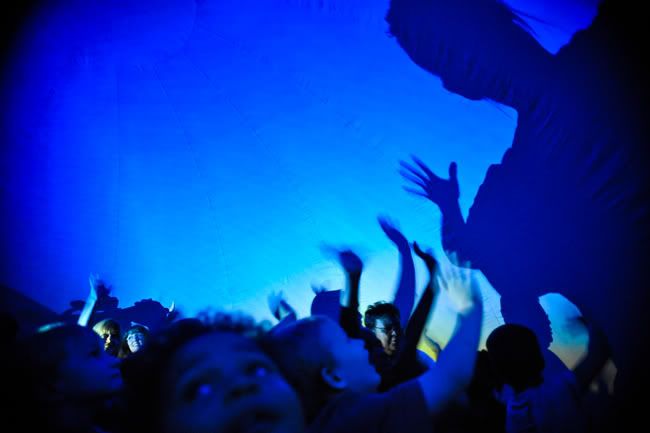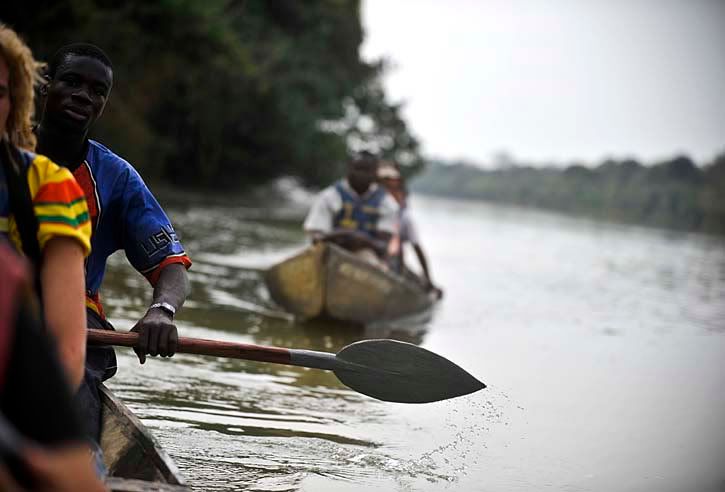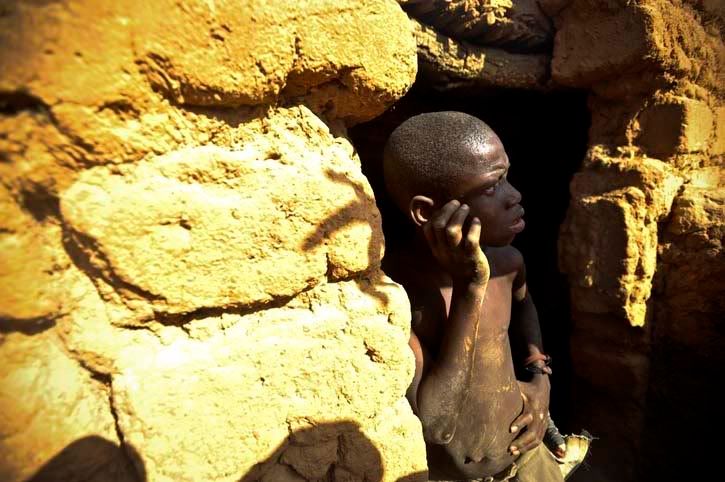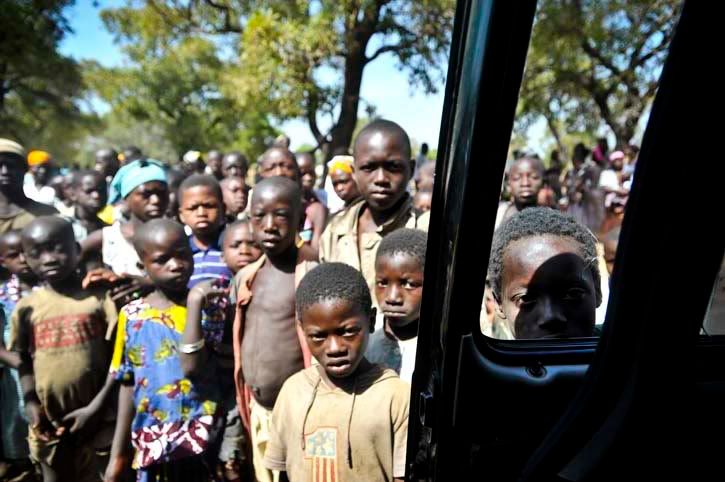A lot has changed in the past 6 months... actually, the past year and a half. I finished up grad school at Syracuse University, returned to the Free Lance-Star, and over the summer moved to Athens, Ohio to start a job as Assistant Professor at the School of Visual Communication at Ohio University. We picked up everything and trucked our way out here, bought our first home, and started again. Not going to lie... there's been anxiety along the way. I really enjoy working for newspapers and really believe in what they do, but even more in what they are capable of doing.
Since leaving, I've thought about what I've learned in the past year about multimedia, both in newsroom/workplace and in general. Here are 10 out of the many.
1. It takes Time, Time, Time...
There's no way around it. It takes time. Time to learn multimedia. Time to plan multimedia. Time to talk multimedia. Time to collaborate on multimedia. Time to do multimedia. And even more time to do it right.
And there's that question of whether or not the time is worth it in the newsroom.
Right now, most of that worth is tracked in views, or hits. (Sometimes in other ways as well, such as response, quality, awards, etc.) More often than not, multimedia does not drive a lot of traffic. What is difficult in this sense is that, in the print product, there is no way to track if one story is read more or less on the page than another story. On a website, there is. It can be seen if crime stories are read more than budget stories, if videos of sports get more hits than feature videos. Some of this can be put on the quality, some on how it is played or where it can be found, some on whether or not viewers are willing to take their time to watch it.
So do I think it is worth the time anyway? You bet. We're storytellers. We're journalists. We don't choose to write stories or take photos because more people will read or look at that one (well, in the ideal we don't).
Multimedia, to me, is about taking the tools available in front of you and using the best ones to communicate to readers, sometimes more effectively than in one way alone. So yes, I think it's worth the time.
And this time is money. If only more places would realize it is worth putting in the money to train people, or even better, pay them for the time they are putting into learning the new skills or reward them for broadening their skills, or not being afraid to let people specialize... and not asking all of this for a reduction in paycheck and fewer hours a week...
2. Can't do one video and assume it is going to be worth selling.
I'm a believer in quality in the quality vs. quantity debate (which as the debate continues, quality seems to be winning). But I also know that if I picked up my still camera one week a year to tell a story, I wouldn't have much luck in telling it at all. But that's how we think about doing audio and video. Sure, it is about quality, but in order to have the quality, you have to keep doing it, and more often than one video every six months (unless that video took you six months to work on).
In addition to that, I don't know about you all, but my first still photo wasn't one I think anyone would publish. Same goes for multimedia. The more you do it, the better it will get. But so many places are saying it isn't worth doing, or short projects aren't worth doing, in the first year or two that professionals are learning to do it.
3. While quality is definitely better than quantity, are you passing up good stories with that thought? Is it an excuse?
It is a fine line where the quality over quantity debate becomes an excuse. I've seen people get excited about working on an idea, even small ideas, until they hit a challenge, or it doesn't come out the way they thought. Then the quality debate comes out.
There's nothing wrong with doing a small, quick project. Quality isn't always long-term stories. If you want to be a photographer who thinks multimedia and does multimedia, it is a good idea to look at stories in front of you and think about whether or not there are possibilities in it. Doesn't mean every story will have it or that what you were thinking of as a possibility won't work out the way you thought. It also doesn't mean that daily assignments don't have potential either.
4. We can't expect everyone to do everything and to do it well.
The movement to have everyone able to do everything seems to be drying up, which in my opinion, is a good thing.
There's nothing wrong with being a still photographer. We should still be masters of the craft that we choose to pursue, whether still photography or other skills. That also doesn't mean that there is anything wrong with being a still photographer who understands multimedia, and even one who has the skills to do it when asked, or one who actually wants to do both.
To me, it should be more about embracing those who want to do multimedia. Nothing wrong with learning new skills when you want to... keeps you current and excited and better at what you do.
The investment needs to be put into their excitement to learn new tools to tell stories. Be willing to take the time to teach them to do it and get the equipment so they can do it.
On top of that, it's about bringing people in who have the job of doing multimedia. You want the content? Have people who have the job of producing it for you. Reporters and photographers and editors and designers and website producers each have their role, and sometimes those overlap and people are asked to cross over. Why not have the role of multimedia present as well?
There is a reason that more and more jobs out there are asking for the multimedia skillset.
5. Push boundaries / take risks. There are very few steadfast "rules".
This beast of multimedia is changing and developing fast.
People are doing new projects every week, the content is getting better and better, as is the communication value. Look at the multimedia that was being done four years ago vs. today. Not getting into one being better or worse than the other, but look at how much it as grown and changed.
Embrace that. There is no rut to get stuck in. Ethics and honesty are among those rules that need to be kept in the journalistic world, and well they should be. But the development of the narrative in a video has so many different approaches to it, as does taking any still photograph or writing any story or designing any page. The way content is put together in an online multimedia package... well... the sky's the limit.
Try something new, and be ok with it failing.
6. Collaborate and don't be afraid to talk shop.
Share the work of others with others. When you have an idea for something, talk to peers about it. I'm not a fan of talking about the job outside of the job, but to me, that's different than talking about work outside of the job.
Let's talk about what we're working on, and talk to others we want to get involved in the process or project. Collaborate with those who have the skills. You don't have to be a one-man-show to produce great multimedia work, and you don't have to have all of the skills to do it either, if you're willing to talk to the people who do.
7. It's not your role to make the money, and it shouldn't be, but it is a reality that the content can help others to do so.
We have to be careful not to get caught in the trap of only doing multimedia that is sellable to advertisers, just as newspapers shouldn't shy away from stories for the same reason (which goes back to not only doing stories that will get hits). Journalism can't be about that, and never should.
But that doesn't mean that when a big package is coming, or a new way of presenting the content is going to be released, that we shouldn't let the people in other departments know about it either. That's just helping others plan and do their job, and don't be afraid of continuing to do yours regardless of what happens there.
8. What media is the best story-telling platform?
Whether it is the written story, photos, slideshows, audio slideshows, videos, interactive graphics, databases, or other, you can use these tools to communicate more effectively the story you are telling. Have fun with the ideas! Get excited about using these tools, and working with others who have the skills to do them, to tell people a great story.
9. Don't try to do both at the same time, but at the same function.
My best tip to someone needing to do two or three things at the "same time" is to not think about doing them at the same time.
If it is a photographer, when you are shooting stills, shoot stills. When you are shooting video, shoot video. When you are gathering audio, gather audio. Once you make the decision to put one piece of equipment down and pick the other up, be ok with that decision. Do you smack your hand on your forehead when you miss a moment with your still camera when there is no audio recorder with you? Sure. That doesn't go away when you have both. But be focused on what you are doing when you are doing it, and you will have more success.
Instead of learning how to do it all at the "same time", you need to learn how to make the best decision about what moments you choose to gather what. Then you know you are using the best tool when you choose to pick it up, and be ok with the tools that are hanging over your shoulder. They'll get their turn.
Along with that, spread the love if you have the staff and support to do it (easier said than done these days, I know). Why have one person do it all when you can have two people work together?
10. Play. Play with the equipment, play with the software, play with the creative process.
Look at multimedia projects. What do you like about that one in particular?
Take the video camera home with you. How would I tell a story about painting my living room?
Take that video into Final Cut. How can I cut it together?
Before you started in the first place, sketch out a storyboard. Before you cut it in Final Cut (or whatever software), sketch out another one. Write your story in one sentence... what's it all about?
The more you play with the whole process, with different gear, with new plugins, with how you approach editing a piece, with how you look at the great work being done by others, the more ideas you will have, the more skilled you will be, the better storyteller you will become.
October 21, 2009
June 1, 2009
One to remember and remind
This was one of those assignments that hit a chord with me that will resonate for a long long time... probably forever. I think there are those times that you do an assignment, a project, an event, or take one photo that makes you understand why you do the job that you do. It is not one of the stories you whip out when talking with other photojournalists over a beer about experiences you had in the field, but maybe one of those experiences you share when having one of those private, quiet and personal heart-to-hearts about the profession that we are in. One of those stories that you know made you understand why you do it.
This was a tough one for me. I woke up in the middle of the night one night wondering if I should go for it, and then if I could do it the justice it so deserved. This family was willing to share something so... I can't even think of a word to describe it... that I knew it needed patience and care and quiet. And all that worry for a portrait and an interview. No big deal, right? But this one was different.
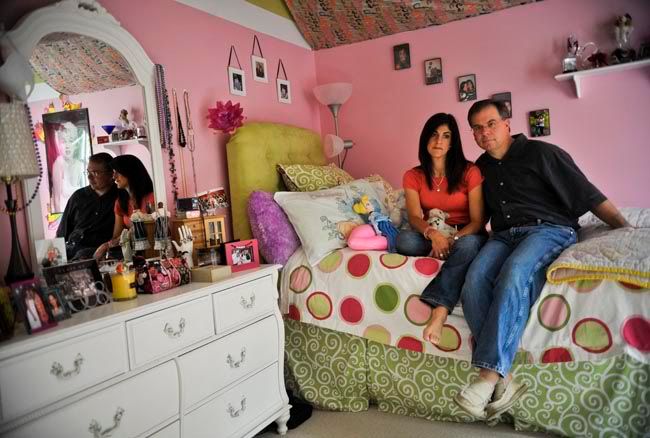
This couple taught me something about what I hope to be as a parent should I ever get the chance. They taught me something about the experience they went through. They taught me the importance of bringing attention to an issue, such as mental illness, which is swept under the rug and hidden from public conversation and difficult to get funding to help by insurance. They shared their story with a purpose, and that made me want to tell their story with purpose. It even made me want to seek out stories in the future to continue telling about the issue. And for that I am among the hundreds of people who think of them, will remember, and I thank them.
For more information, go to Faces.
So many assignments we go on we sigh when we get. This one made me sigh too, but in a totally different way. This is a tough time for our industry, for our careers and for our profession. I think it is the perfect time to find those assignments that make you sigh, make you see the person's purpose for telling it, and make you realize why it should be told. Regardless of everything else that makes you wonder why you do it, stories count, maybe some more than others, but they count and matter.
This was a tough one for me. I woke up in the middle of the night one night wondering if I should go for it, and then if I could do it the justice it so deserved. This family was willing to share something so... I can't even think of a word to describe it... that I knew it needed patience and care and quiet. And all that worry for a portrait and an interview. No big deal, right? But this one was different.

This couple taught me something about what I hope to be as a parent should I ever get the chance. They taught me something about the experience they went through. They taught me the importance of bringing attention to an issue, such as mental illness, which is swept under the rug and hidden from public conversation and difficult to get funding to help by insurance. They shared their story with a purpose, and that made me want to tell their story with purpose. It even made me want to seek out stories in the future to continue telling about the issue. And for that I am among the hundreds of people who think of them, will remember, and I thank them.
For more information, go to Faces.
So many assignments we go on we sigh when we get. This one made me sigh too, but in a totally different way. This is a tough time for our industry, for our careers and for our profession. I think it is the perfect time to find those assignments that make you sigh, make you see the person's purpose for telling it, and make you realize why it should be told. Regardless of everything else that makes you wonder why you do it, stories count, maybe some more than others, but they count and matter.
May 14, 2009
Ray

My husband and I have been going to Einsteins Bros Bagels since we met. It's right across the street from where he works, the people who work there were friendly, and there's Ray.
Ray Kasper is one of those local characters who you know even if you don't actually know him. He's always in Einsteins with his wife, his nephew, a friend, a new acquaintance or maybe just himself. He always has his own mug, sits in the chair with the plaque on the back that the store gave him, may have one of his books of poetry out on the table in front of him, and always sits at the largest table. Ray doesn't do this to take the space, but to invite others to sit with them. He may tell them a joke or start a game with a bored child at a nearby seat, but he's always friendly.
And he's been doing this for more than a decade.
I've met Ray and chatted with him numerous times, but Tuesday, the very last day that the store would be open, I got to shoot Ray for the paper. Hearing his story and getting to know who he actually was made me think of the people we see every day that you know but don't really know, and how lucky we are, even in this trying time for our business and industry, to get the chance to hear the stories, happenings and moments of the characters around us.
Definitely worth it.
I asked the same question many asked him, "So Ray... where do you go from here?" He's not quite sure yet.
Maybe Chick-Fil-A.
Maybe somewhere else.
But it has to have a few things: good coffee, be a clean place, and have nice people who work there.
I don't know where he'll end up, but I'll be interested in tracking him down. And see what characters he brings with him.

May 5, 2009
May 1, 2009
Wild Bunch Wildlife Rescue
My last project here will be on a wildlife rehabilitation center and the one-woman-show that runs it. What I'm really excited about for this is that the woman, Diana O'Conner, is very open to me being there, and I will hopefully get to spend the night at some point. It's always nice when you connect with someone on the projects where you work, and I'm getting an understanding as to why this passion means so much to her.


Paul Stefan Home
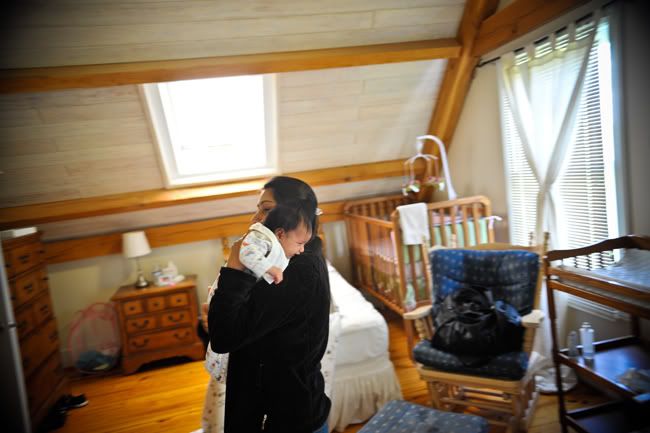
A quick series of shoots I'm doing on the Paul Stefan Home. The ladies and their children who live here make it a nice time going, and are very friendly and open about their experiences.
March 27, 2009
Snow Day
These were taken earlier this month on the last good snow of the year (probably). So, the photographers hit the road in search of news and weather (which was everywhere).
About 4 days a week I get up early to coach some rowing before work. On this day we were inside, so I grabbed a couple of photos on my way there.
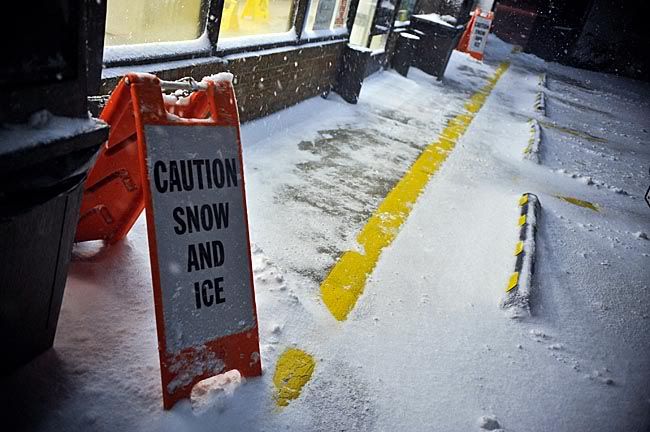
Did it need a sign?
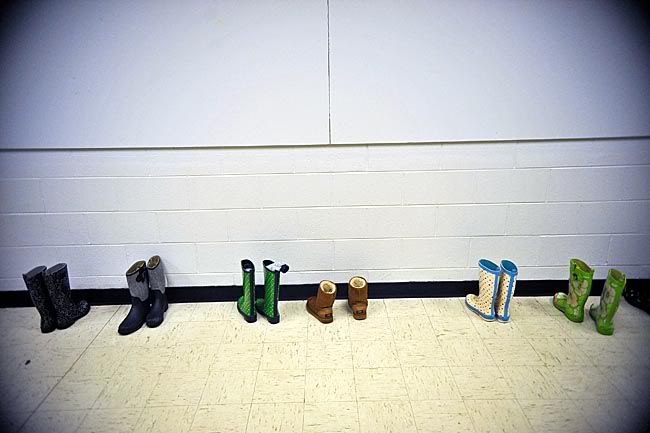
Trying to keep the floors clean from the slush.
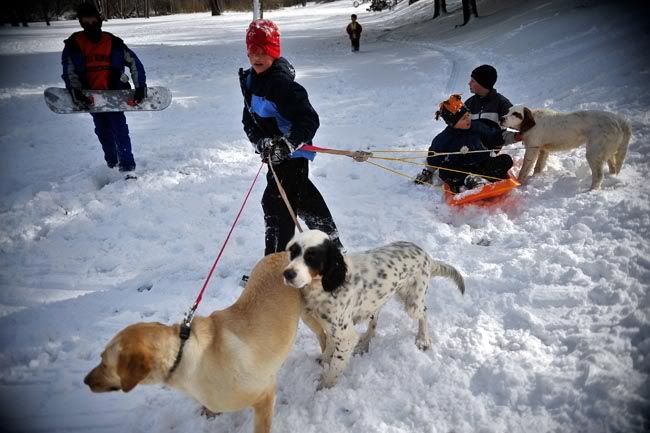
I don't know if it worked out well, but it looked like fun.
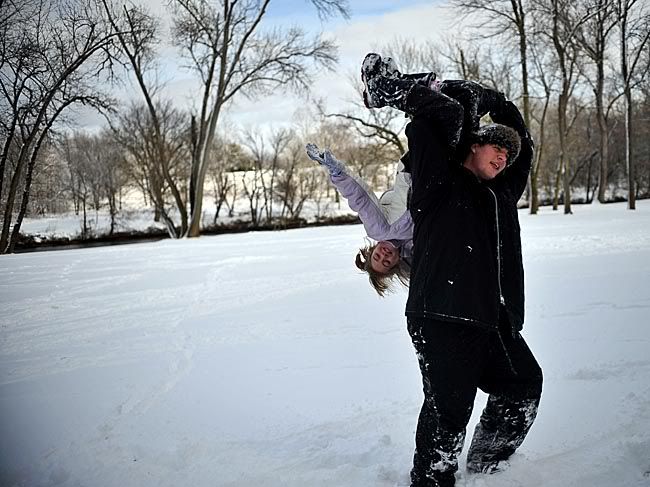
About 4 days a week I get up early to coach some rowing before work. On this day we were inside, so I grabbed a couple of photos on my way there.

Did it need a sign?

Trying to keep the floors clean from the slush.

I don't know if it worked out well, but it looked like fun.

March 16, 2009
Dreams of a First Home
The Free Lance-Star began a series last week to localize and put faces on the stimulus package. It's called The Stimulus: Bringing It Home. This began with an idea by Mike Morones, my co-worker here in the photography department, initially dealing with Obama's agenda. We planned that one out, but due to some happenings at the paper in January, it never took off. That plan got adapted by a reporter, Bill Freehling, to now be this series. I think it should prove to be some heartfelt stories and a strong package, running occasionally over the next few weeks, and being 15 stories long.
It's been a lot of work planning it out, building the multimedia presentation for it with the help of Alex Russell, and then updating that as the stories run. We're going to keep working on it and improving it throughout the series as well. Figure why not make it all that it can be when we actually have the chance to do so?
I was lucky enough to get to shoot the kickoff story, and I was actually happy with out it turned out. Got to meet a couple of great first-time home buyers, who give my currently renting and leasing self some hope.
Tracy and I spent hours talking and chatting as we waited for delivery men to arrive and handymen to show up. I really enjoyed our conversations.
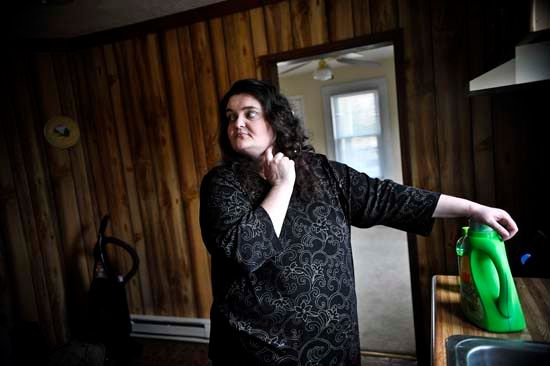
It's been a lot of work planning it out, building the multimedia presentation for it with the help of Alex Russell, and then updating that as the stories run. We're going to keep working on it and improving it throughout the series as well. Figure why not make it all that it can be when we actually have the chance to do so?
I was lucky enough to get to shoot the kickoff story, and I was actually happy with out it turned out. Got to meet a couple of great first-time home buyers, who give my currently renting and leasing self some hope.
Tracy and I spent hours talking and chatting as we waited for delivery men to arrive and handymen to show up. I really enjoyed our conversations.

February 10, 2009
Child Support
Child Support - Ghana is one of NGOs I've met that really touched me. I'll write more about it, but here are some photos of their projects. I had the chance to spend 2 days with Eric Coomans and the other volunteers in Wa, Northern Ghana.
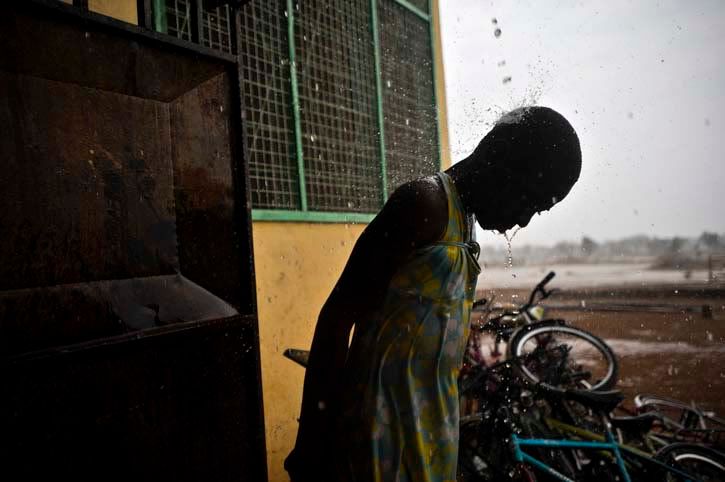
A children's home where 10 children live with one house-mother when their parents are not able to take care of them.
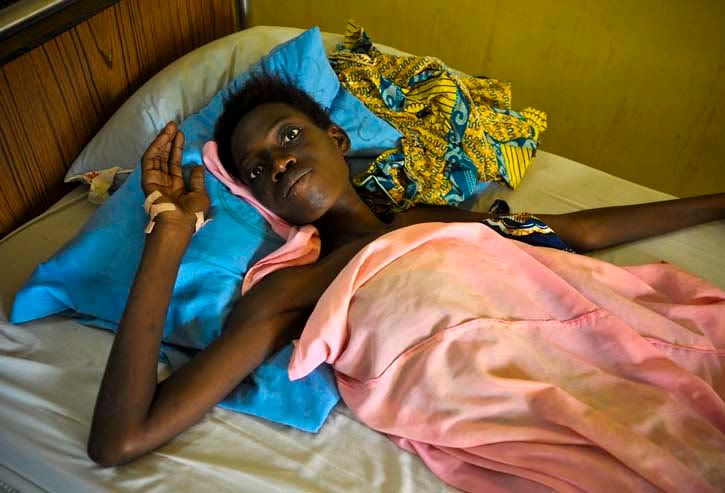
A hospice center. Hospice here does not mean the final stages, and while many are no longer here, some leave once recovered. Rashida is 24 years-old.
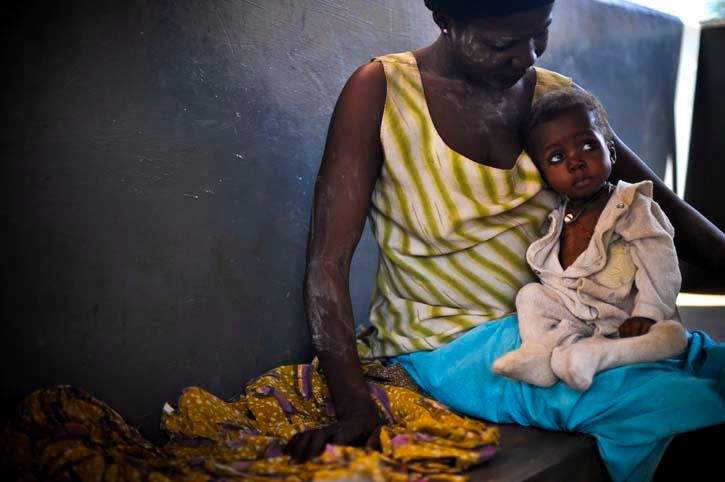
A rehabilitation center for malnourished babies and children. Being one of the poorest regions in Ghana, the malnutrition stems from not being able to afford food.
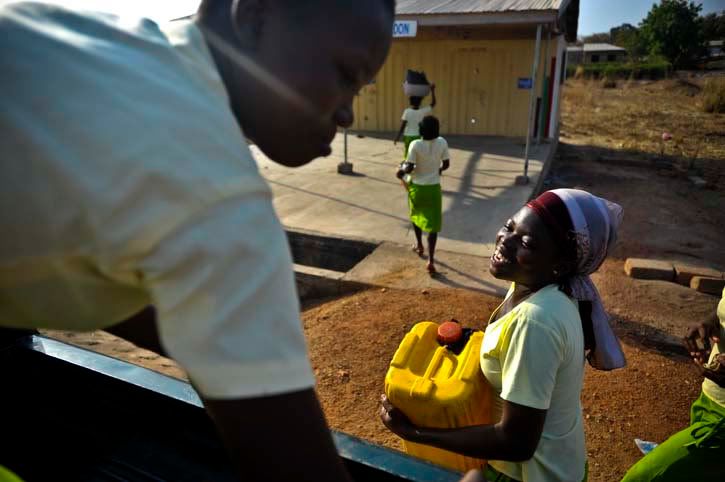
A home and training program for young women. These women would have otherwise been sent to Accra for a life of carrying water and goods on their heads to make a living, which often results in becoming a commercial sex worker to get by. Instead they are being trained to sew and in hairdressing, and have their own business which they run.

A children's home where 10 children live with one house-mother when their parents are not able to take care of them.

A hospice center. Hospice here does not mean the final stages, and while many are no longer here, some leave once recovered. Rashida is 24 years-old.

A rehabilitation center for malnourished babies and children. Being one of the poorest regions in Ghana, the malnutrition stems from not being able to afford food.

A home and training program for young women. These women would have otherwise been sent to Accra for a life of carrying water and goods on their heads to make a living, which often results in becoming a commercial sex worker to get by. Instead they are being trained to sew and in hairdressing, and have their own business which they run.
February 9, 2009
RAAP

RAAP, or the Rural Aid Action Programme, is an NGO based in Hain, Ghana. Their mission is to develop the region, and much of their work revolves around giving independence to women.

As one of the programs, women are given goats as livestock to help earn a sustainable income. In return for the goat given by RAAP, each woman must give a goat born back to the organization, who in turn passes it on to another woman.
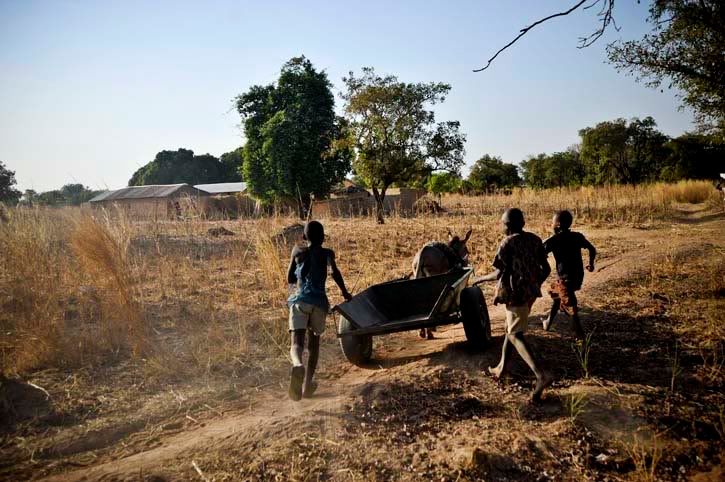
Some women also have the chance to get a donkey and cart, which can in turn provide an income by being rented or used. It is also better for the woman's health, decreasing the need to carry heavy loads on her head.
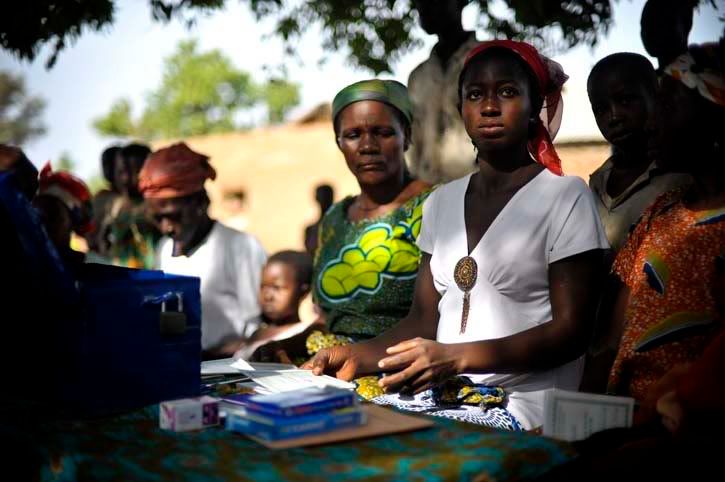
The Village Savings & Loan program gives women in a village the chance to save and borrow money on their own. The men have a separate group.
Working with this organization for a couple of days was very interesting and really showed the amount of good that a small action and mission can do. The women were given independence and confidence. I was not given the opportunity to photograph as freely on my own as I would have liked, but enjoyed meeting these women.
Faces
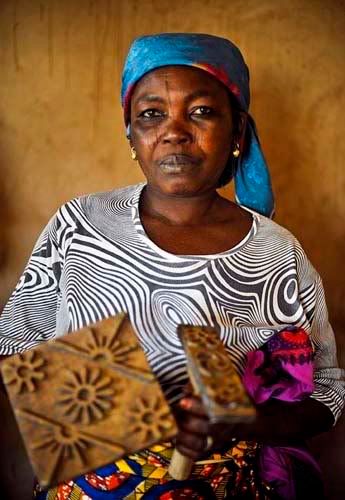
Woman and wife of the chief trained in making batik cloth.
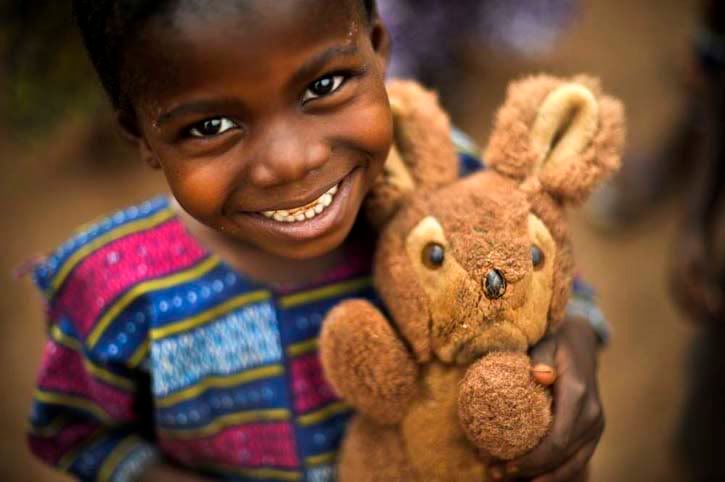
Yes, it's a kid picture, but I like the face... and the bunny.
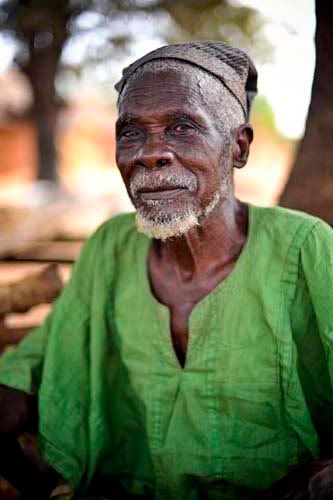
Chief.
CID Ghana
CID Ghana, or Cooperation for Integrated Development, is a development organization in Tamale. It supports communities through schools and resources and development through educational skill-training programs.
Wish I could have spent more time with them, but I was able to get some material about their projects in the day I was there.
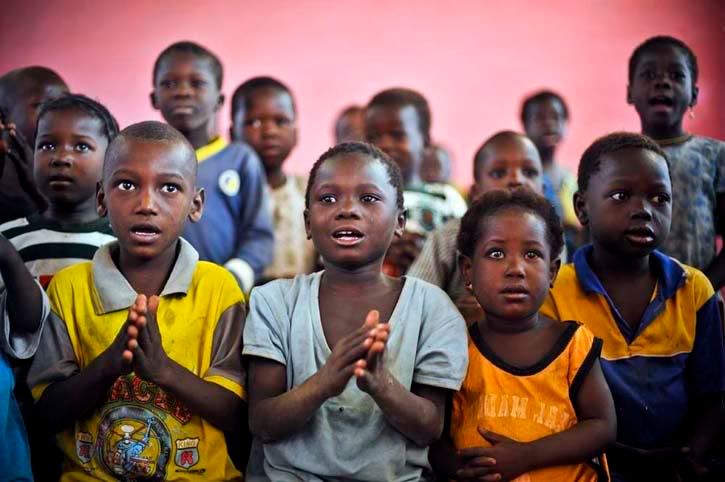
One of the projects is to build a toilet next to one of the schools that CID-Ghana supports by providing a teacher, fixing up the school and working with the ministry of health to give the students one meal per day. This is to encourage parents to let the children attend school.

Along with sponsoring the school in Kotingli, a small village, there is also work being done to make things more sanitary by building a toilet for the school and to provide cleaner drinking water. Until the filtering system works, there are chemicals put into the water to make it clean so it is usable.
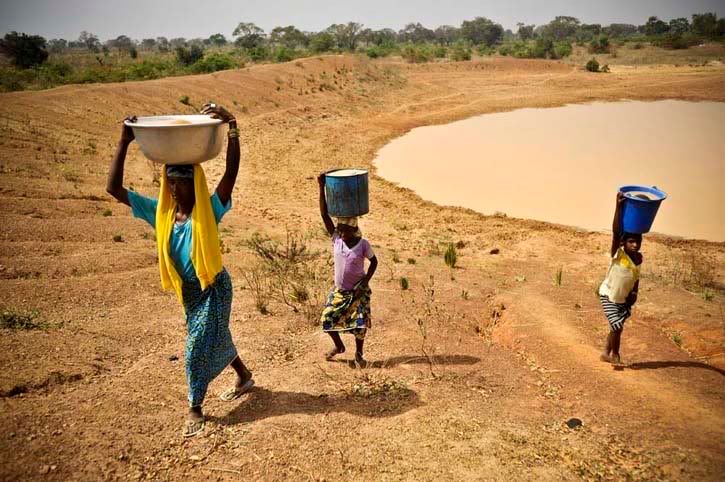
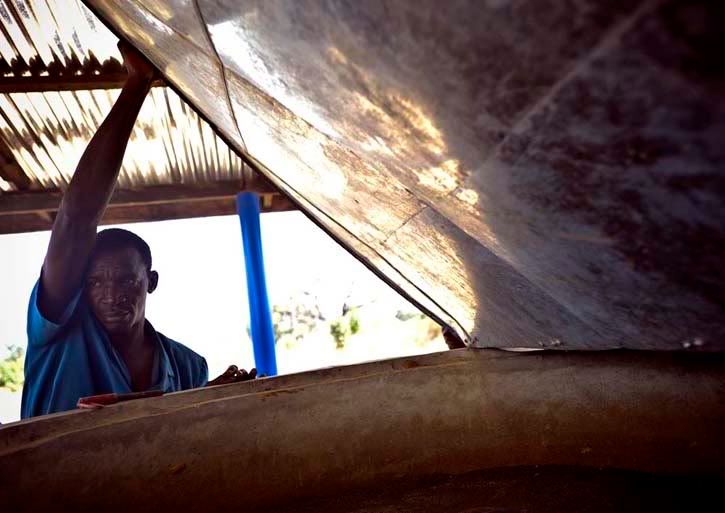
The water also dries up every year, forcing women to walk up to 22km to fetch water each day, carrying the large loads on their heads with their children helping as well. The filtering system is almost completed as well.
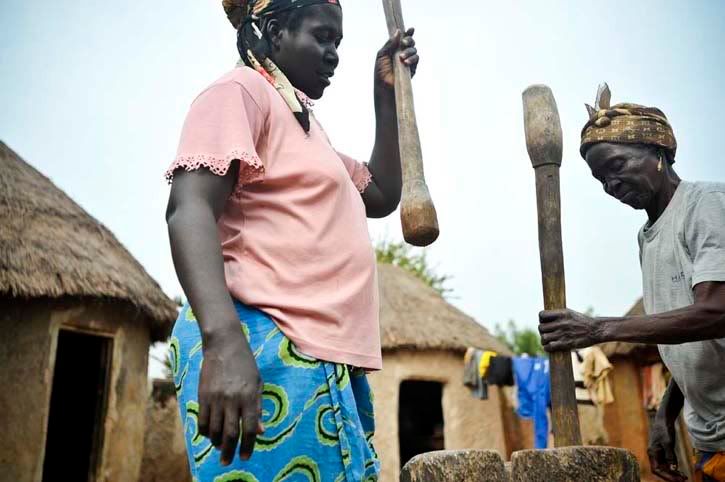
There is also a goal to train women in skills so they can help support their families. As someone told me in the North, if there was a Nobel prize for anything in Ghana, it should go to the mothers. Women do the cooking, cleaning and caring for the children, as well as often farm work to try to support the family financially. Not all of the money earned by men is returned to the family, but what is earned by the women is. They trained the women to make batik cloth to sell.
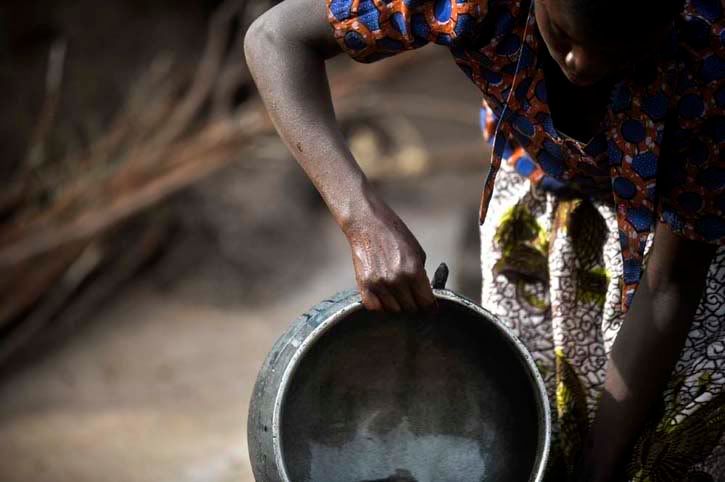
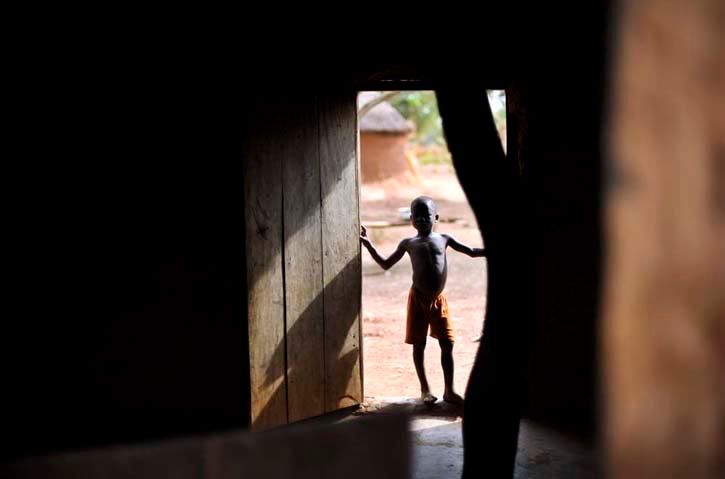
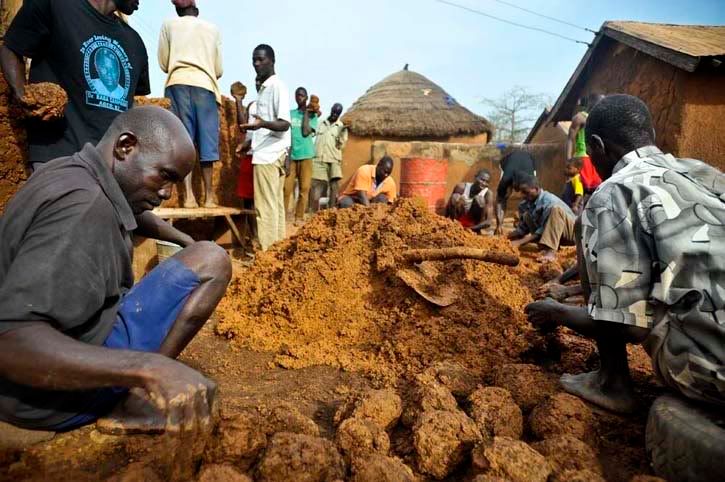
One of the things I really noticed in the villages was the teamwork environment. When a house needs to be built, all of the men gather to help build it in return for dinner. It's about helping each other to support the greater community. When food needs to be made, two women may team together to make it. I think much of the world could learn from that.
Wish I could have spent more time with them, but I was able to get some material about their projects in the day I was there.

One of the projects is to build a toilet next to one of the schools that CID-Ghana supports by providing a teacher, fixing up the school and working with the ministry of health to give the students one meal per day. This is to encourage parents to let the children attend school.

Along with sponsoring the school in Kotingli, a small village, there is also work being done to make things more sanitary by building a toilet for the school and to provide cleaner drinking water. Until the filtering system works, there are chemicals put into the water to make it clean so it is usable.


The water also dries up every year, forcing women to walk up to 22km to fetch water each day, carrying the large loads on their heads with their children helping as well. The filtering system is almost completed as well.

There is also a goal to train women in skills so they can help support their families. As someone told me in the North, if there was a Nobel prize for anything in Ghana, it should go to the mothers. Women do the cooking, cleaning and caring for the children, as well as often farm work to try to support the family financially. Not all of the money earned by men is returned to the family, but what is earned by the women is. They trained the women to make batik cloth to sell.



One of the things I really noticed in the villages was the teamwork environment. When a house needs to be built, all of the men gather to help build it in return for dinner. It's about helping each other to support the greater community. When food needs to be made, two women may team together to make it. I think much of the world could learn from that.
Heading North
I decided to head with a group of volunteers up North to do some work for other NGOs. They were kind of touring the different projects, and I was able to do small amounts of day-work to give them something.
I usually prefer to travel a little more low-profile and by my own schedule, but we made it up and back safe and sound in the decorated trotro.
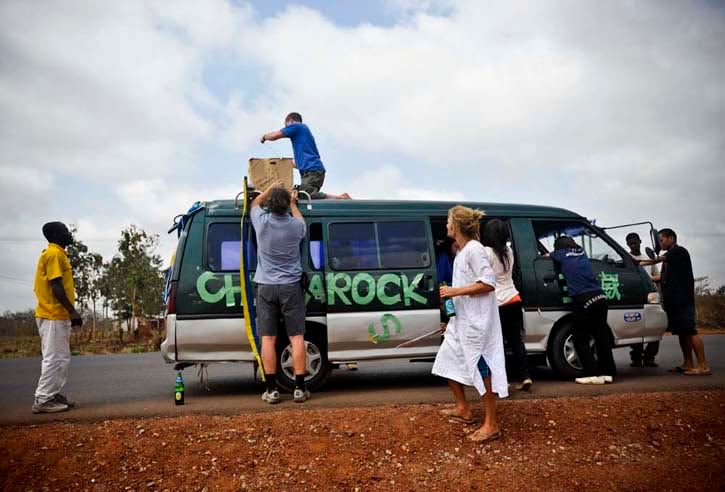
After a box of toys went flying off the top.
I usually prefer to travel a little more low-profile and by my own schedule, but we made it up and back safe and sound in the decorated trotro.

After a box of toys went flying off the top.
Home Visit
Later in the day we went on a home visit to two of the children sponsored by Light for Children. The home visits are meant to update the profiles of the children and check-in on how they are doing.
It's a tricky situations sometimes as well. AIDS comes with a big stigma here, and just because a child is sponsored by Light for Children doesn't mean he or she has it. It is not discussed during the visits as sometimes even the children or the rest of their family do not know for fear of being stigmatized and cast out of their living situation. As a journalist, I tread lightly in the situation.
In all, though, the home visits are a good chance to check-in on how school and life and family are going and for the volunteers to meet the kids, who are welcoming but can be shy just like any kids, whether they are used to meeting obronis or not.
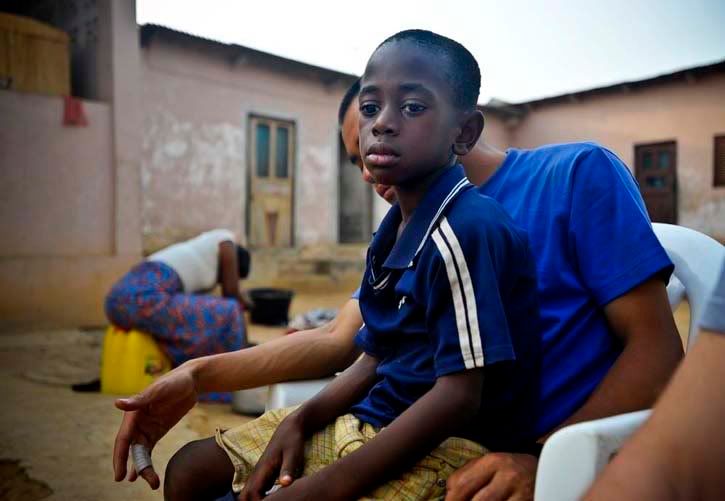
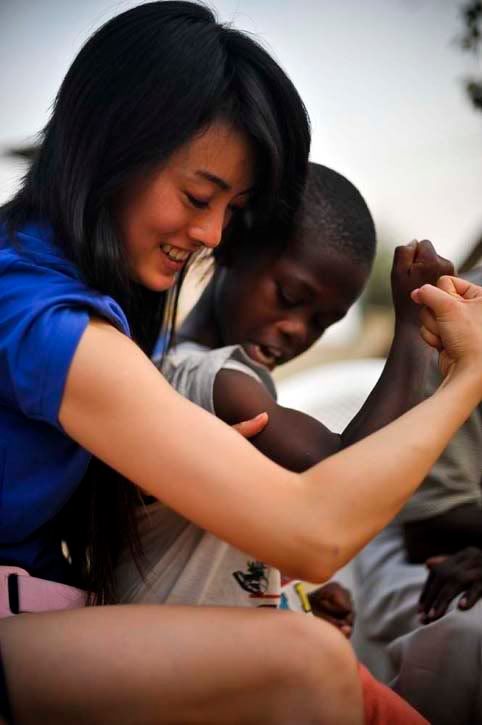
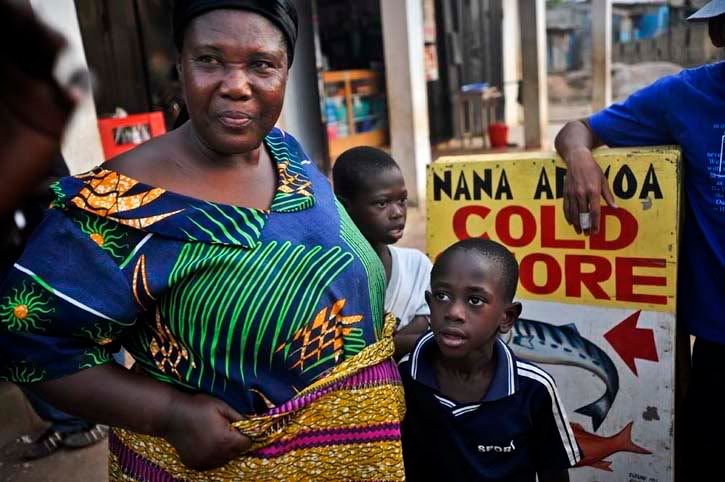
It's a tricky situations sometimes as well. AIDS comes with a big stigma here, and just because a child is sponsored by Light for Children doesn't mean he or she has it. It is not discussed during the visits as sometimes even the children or the rest of their family do not know for fear of being stigmatized and cast out of their living situation. As a journalist, I tread lightly in the situation.
In all, though, the home visits are a good chance to check-in on how school and life and family are going and for the volunteers to meet the kids, who are welcoming but can be shy just like any kids, whether they are used to meeting obronis or not.



Journey of Hope
Finally access to internet again! It's amazing the bit of withdrawal you go through...
The following day after the Malaria talk, a group of volunteers went to a school to deliver the Journey of Hope talk (a program to educate about the prevention of HIV transmission. Faithfulness, Abstinence or Condom, and pick the best for the time in your life.)
One of the projects I'll be doing is a short piece about the Journey of Hope.
It's been interesting doing work for some different NGOs here. It's a mix of cultural differences and balancing controls and communication. I'll admit, there were times of frustration, but hopefully in the end each will get some work that will help their cause, either showing what they are doing or showing the issues.
I really do believe in the work of grassroots NGOs. They struggle to stay up, but small things go a long way.
Take Journey of Hope. There are questions of the volunteers of how to take it to the next level in delivery, and there is a push to focus on abstinence for the teens. But the students have a chance to bring up questions about HIV transmission, such as can you get it from deep kissing or sharing food?
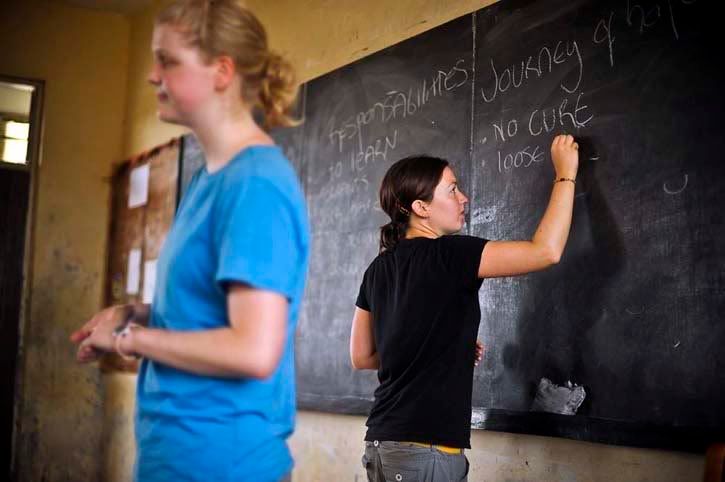

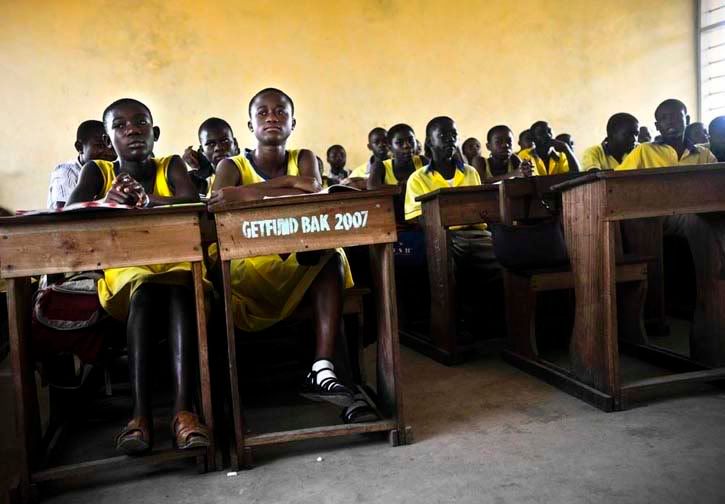
The following day after the Malaria talk, a group of volunteers went to a school to deliver the Journey of Hope talk (a program to educate about the prevention of HIV transmission. Faithfulness, Abstinence or Condom, and pick the best for the time in your life.)
One of the projects I'll be doing is a short piece about the Journey of Hope.
It's been interesting doing work for some different NGOs here. It's a mix of cultural differences and balancing controls and communication. I'll admit, there were times of frustration, but hopefully in the end each will get some work that will help their cause, either showing what they are doing or showing the issues.
I really do believe in the work of grassroots NGOs. They struggle to stay up, but small things go a long way.
Take Journey of Hope. There are questions of the volunteers of how to take it to the next level in delivery, and there is a push to focus on abstinence for the teens. But the students have a chance to bring up questions about HIV transmission, such as can you get it from deep kissing or sharing food?



January 28, 2009
School Visit
Tuesday the group from Light for Children did a visit to the Yaa Acchia Girl School in Kumasi to give a talk about malaria.

The students performed skits that they had rehearsed for a long time, and the group gave some malaria information. At the end, with the speakers pumping out music, the students had us join in on dancing.

Wednesday will be another visit to a school to deliver the "Journey of Hope" educational message about HIV/AIDS, then back to the school to finish up yesterday's work, to the market to gather food for a cook-out, hopefully home-visits with the children, then a cook-out before leaving tomorrow for the North to visit a bunch of NGOs.

The students performed skits that they had rehearsed for a long time, and the group gave some malaria information. At the end, with the speakers pumping out music, the students had us join in on dancing.

Wednesday will be another visit to a school to deliver the "Journey of Hope" educational message about HIV/AIDS, then back to the school to finish up yesterday's work, to the market to gather food for a cook-out, hopefully home-visits with the children, then a cook-out before leaving tomorrow for the North to visit a bunch of NGOs.
January 26, 2009
So it begins
Finally in Africa.
It was a long trip, but not a bad one. I don't think I've ever had to show my passport so many times in a 24-hour period. The plane took me from Washington D.C. to Frankfurt in 7 hours, then about an hour and a half through customs in Germany, and on another plane to Lagos, Nigeria as a quick stop before heading on to Accra, Ghana.
I am currently in Ghana volunteering as a photojournalist for Light for Children and hopefully gathering some stories for other organizations. I picked up extra work here and there to fund the trip, and am doing it because it can help in a different way, but also because I really believe in service, and lately have a need to feel like I am doing something for a reason bigger than myself.
Once arriving in Accra, Light for Children was kind enough to have someone pick me up and Poppo definitely made life easier! He was there to greet me with a big bottle of water, got me to the guest house where I stayed for the night, introduced me to the group of volunteers he works with, and gave me an introduction to Ghana dos and don't over dinner by the Gulf of Guinnea. (Don't use your left hand in relation to others, whether eating or waving, Obroni means White Person or Foreigner but is not an insult, etc.)
The next day we went to the airport to pick up another volunteer and together hopped on the bus to head to Kumasi. There were some interesting movies played on the bus, and as I was asked when I got into Kumasi, "Did they involve a story line of someone cheating on someone else? They usually do." And they did.
Last night I got settled in with my host family, who are incredibly hospitable, then talked with Sebastian about the upcoming three weeks, what the group has been up to, and what we hope to accomplish. We both agreed have a general plan and play it by ear. This morning I met with Yaw and learned the history of Light for Children.
Haven't taken any photos or interviews yet, but am learning and reading a lot quickly. Today the volunteers return from the North, then tomorrow go to a school to give a presentation. I'll be heading along for that, and on Tuesday we all go back North to observe and work with a few other NGOs there. We came up with some ideas to propose, and we'll see what I can get done. We go about a day and a half with each one, so it will be quick work.
Upon returning to Kumasi, I will really dig into the work with Light for Children... going on educational events with the volunteer group, spending time with children and their families, and following those who run the organization.
For now, I'll keep planning and getting prepared and educated on the missions of the groups, and hopefully get my cell to work today!
It was a long trip, but not a bad one. I don't think I've ever had to show my passport so many times in a 24-hour period. The plane took me from Washington D.C. to Frankfurt in 7 hours, then about an hour and a half through customs in Germany, and on another plane to Lagos, Nigeria as a quick stop before heading on to Accra, Ghana.
I am currently in Ghana volunteering as a photojournalist for Light for Children and hopefully gathering some stories for other organizations. I picked up extra work here and there to fund the trip, and am doing it because it can help in a different way, but also because I really believe in service, and lately have a need to feel like I am doing something for a reason bigger than myself.
Once arriving in Accra, Light for Children was kind enough to have someone pick me up and Poppo definitely made life easier! He was there to greet me with a big bottle of water, got me to the guest house where I stayed for the night, introduced me to the group of volunteers he works with, and gave me an introduction to Ghana dos and don't over dinner by the Gulf of Guinnea. (Don't use your left hand in relation to others, whether eating or waving, Obroni means White Person or Foreigner but is not an insult, etc.)
The next day we went to the airport to pick up another volunteer and together hopped on the bus to head to Kumasi. There were some interesting movies played on the bus, and as I was asked when I got into Kumasi, "Did they involve a story line of someone cheating on someone else? They usually do." And they did.
Last night I got settled in with my host family, who are incredibly hospitable, then talked with Sebastian about the upcoming three weeks, what the group has been up to, and what we hope to accomplish. We both agreed have a general plan and play it by ear. This morning I met with Yaw and learned the history of Light for Children.
Haven't taken any photos or interviews yet, but am learning and reading a lot quickly. Today the volunteers return from the North, then tomorrow go to a school to give a presentation. I'll be heading along for that, and on Tuesday we all go back North to observe and work with a few other NGOs there. We came up with some ideas to propose, and we'll see what I can get done. We go about a day and a half with each one, so it will be quick work.
Upon returning to Kumasi, I will really dig into the work with Light for Children... going on educational events with the volunteer group, spending time with children and their families, and following those who run the organization.
For now, I'll keep planning and getting prepared and educated on the missions of the groups, and hopefully get my cell to work today!
January 21, 2009
Subscribe to:
Posts (Atom)

